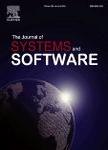版权所有:内蒙古大学图书馆 技术提供:维普资讯• 智图
内蒙古自治区呼和浩特市赛罕区大学西街235号 邮编: 010021

作者机构:Wuhan Univ Sch Comp Sci Wuhan Peoples R China Shanghai Jiao Tong Univ Artificial Intelligence Inst Shanghai Peoples R China
出 版 物:《JOURNAL OF SYSTEMS AND SOFTWARE》 (系统与软件杂志)
年 卷 期:2021年第180卷
页 面:111026-111026页
核心收录:
学科分类:08[工学] 0835[工学-软件工程] 0812[工学-计算机科学与技术(可授工学、理学学位)]
基 金:National Science Foun-dation of China [62072342, 61672392] National Key Research and Development Program of China [2016YFC1202204]
主 题:Software defect prediction Metaheuristic feature selection Whale optimization algorithm Convolutional neural network Kernel extreme learning machine
摘 要:Software defect prediction aims to identify the potential defects of new software modules in advance by constructing an effective prediction model. However, the model performance is susceptible to irrelevant and redundant features. In addition, previous studies mainly use traditional data mining or machine learning techniques for defect prediction, the prediction performance is not superior enough. For the first issue, motivated by the idea of search based software engineering, we leverage the recently proposed whale optimization algorithm (WOA) and another complementary simulated annealing (SA) to construct an enhanced metaheuristic search based feature selection algorithm named EMWS, which can effectively select fewer but closely related representative features. For the second issue, we employ a hybrid deep neural network - convolutional neural network (CNN) and kernel extreme learning machine (KELM) to construct a unified defect prediction predictor called WSHCKE, which can further integrate the selected features into the abstract deep semantic features by CNN and boost the prediction performance by taking full advantage of the strong classification capacity of KELM. We conduct extensive experiments for feature selection or extraction and defect prediction across 20 widely-studied software projects on four evaluation indicators. Experimental results demonstrate the superiority of EMWS and WSHCKE. (C) 2021 Elsevier Inc. All rights reserved.